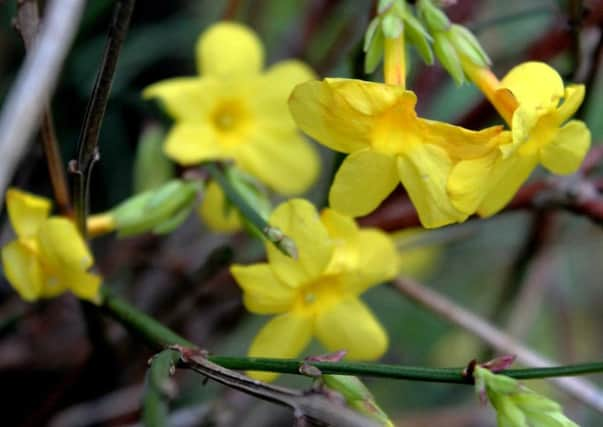Gardening: Sunny side up


Thankfully, there are exceptions, such as the harbinger of spring, the snowdrop, and, perhaps not heard so often, the harbinger of winter – Jasminum nudiflorum, AKA the yellow winter jasmine – which is doing its best to bring a bit of welcome colour to a grey end to the year.
The yellow, starry flowers appear in great profusion, particularly when the weather turns a bit milder. And the shrub’s younger wood does its bit, too, the fresh green a welcome change to the normal drab of most shrubs and trees at this time of year.
Advertisement
Hide AdAdvertisement
Hide AdHorticulturally speaking, winter jasmine hasn’t been around all that long. It was discovered in 1845, in China, by the great plant hunter Robert Fortune, and when it first arrived in Britain, it was grown indoors before some bright spark realised that it did better outdoors – whatever the weather.
Winter jasmine is not actually a climbing plant. It has no natural means of support: it scrambles, dragging itself upwards on whatever it can drape over. So unless you want it rambling around on the ground or through vegetation, it needs to be trained on a fence or pole.
In winter, the evergreen stems are nearly leafless (hence the name). And whenever a shoot touches the ground, it will readily take root – a bonus for any gardener who can’t be bothered to try propagating the plant.
It can take a while to get its act together, but sooner or later it should get into flowering mode. Winter Jasmine is a lot hardier than many people think, but it does like sun.
Advertisement
Hide AdAdvertisement
Hide AdMost soils will suffice as long as they’re not waterlogged, but it does appreciate a bit of decent soil, perhaps boosted with a helping of leaf mould.
One of its nicest habits is that if you cut a few sprigs, bring them indoors and pop them into a vase of water – the buds will slowly open to produce flowers which will scent the room.
Pruning (more for tidiness that anything else) is usually done in early spring by shortening the side-shoots.
When it gets old and past its best, perk it up by cutting away all top growth. Young shoots will then spring up from the base of the plant.